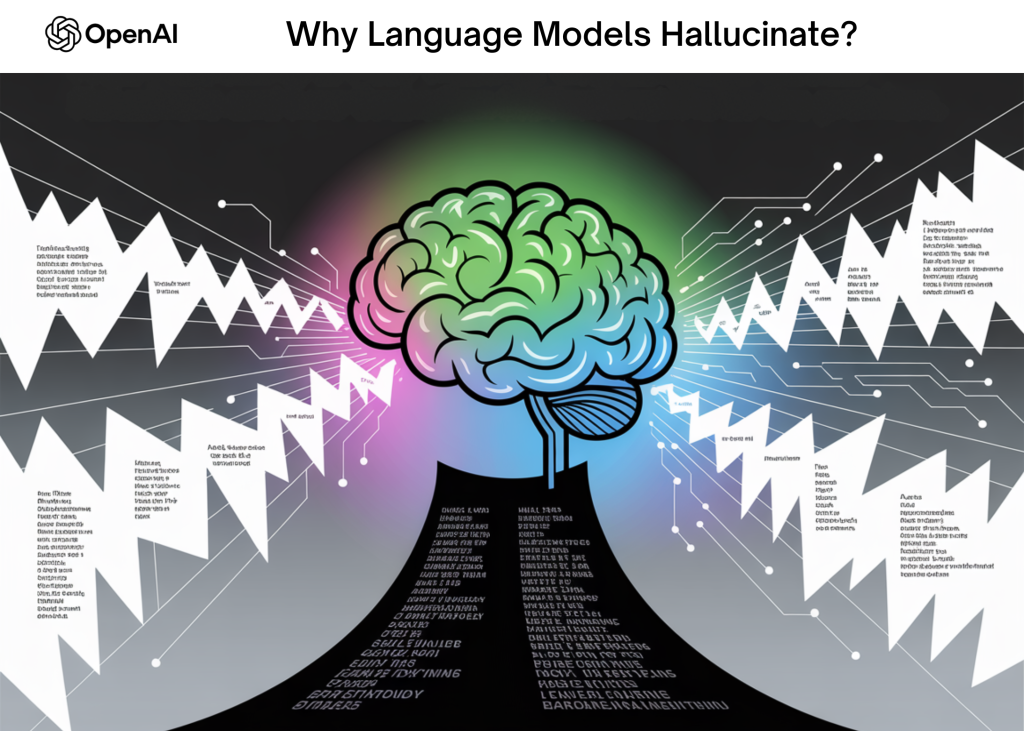Blog
From Pretraining to Post-Training: Why Language Models Hallucinate and How Evaluation Methods Reinforce the Problem

Understanding the Phenomenon of Hallucination in Language Models
Language models have undoubtedly transformed how we interact with technology, enhancing our communication, creativity, and information processing abilities. However, one significant concern that has surfaced is the phenomenon known as "hallucination." This term describes when a language model generates content that is factually inaccurate, misleading, or entirely fabricated. To fully comprehend this issue, we must explore its origins, implications, and the evaluation methods that may inadvertently exacerbate it.
The Emergence of Hallucination in Language Models
What Is Hallucination?
In the context of language models, hallucination refers to the generation of information that is not grounded in reality. This can manifest as:
- False Information: Statements that users might mistakenly believe to be true.
- Confabulation: The model creating plausible-sounding but entirely fictitious narratives.
These inaccuracies can mislead users, creating distrust in technology designed to assist and inform.
Reasons Behind Hallucination
Several factors contribute to this troubling tendency of language models:
-
Data Quality: The models are trained on extensive datasets that include a mix of factual and fictional content. If the training data contains inaccuracies, the model is likely to replicate these errors.
-
Training Objectives: Most language models prioritize coherence and fluency over factual accuracy. This design decision allows them to create engaging narratives, but it often comes at the expense of truthfulness.
- Inference Limitations: While models can recognize patterns in data, they lack genuine understanding. Their predictions are based solely on statistical correlations rather than genuine comprehension of facts.
The Role of Training and Evaluation
Pretraining and Its Impact
The journey of a language model starts with pretraining, where it learns from vast amounts of text data. During this phase, it picks up semantics, grammar, and style. However, the lack of critical filtering means that any misinformation present in the training data can seep into the model’s responses.
Evaluation Methods and Their Influence
Post-training evaluation is crucial for assessing a model’s performance. However, the typical methods used can inadvertently reinforce the issue of hallucination. Some common evaluation approaches include:
-
Perplexity Scores: While useful for measuring model fluency, they do not account for factual accuracy, allowing hallucinated content to appear more favorable than it is.
- Human Evaluation: Although humans can assess nuanced aspects of content, biases can influence subjective judgments. Models might receive approval for generating entertaining or articulate responses, regardless of their factual integrity.
Consequences of Hallucination
The implications of hallucination in language models are multifaceted and critical:
Erosion of Trust
When users encounter inaccurate information generated by language models, their trust in these technologies diminishes. In applications like customer service, educational assistance, or news generation, reliability is paramount. Frequent hallucinations can lead to skepticism about the model’s capabilities.
Misleading Disinformation
Moreover, if language models produce and disseminate false claims, they can inadvertently contribute to the spread of misinformation, particularly on social media platforms. This could have serious societal impacts, especially in critical areas like health, politics, and education.
Strategies for Mitigating Hallucination
Enhancing Data Quality
Improving the datasets used for training can significantly reduce hallucinations. Curating high-quality, fact-checked sources ensures that language models have a more accurate foundation to build upon.
Implementing Fact-Checking Mechanisms
Integrating real-time fact-checking tools into language models could enhance their responses. Mechanisms that cross-reference generated content with verified databases could help ensure the accuracy of information provided.
Redefining Evaluation Metrics
Shifting focus from traditional evaluation methods to metrics that encompass factual accuracy could produce more reliable models. Metrics such as truthfulness scores could become essential in the evaluation process, prioritizing information more closely aligned with reality.
Conclusion: The Path Forward
Hallucination in language models represents a significant challenge that requires collective action from researchers, developers, and users. By understanding the factors contributing to this issue and taking proactive steps to improve data quality, implement fact-checking, and redefine evaluation metrics, we can work toward creating more trustworthy and reliable language models.
The journey from pretraining to post-training is complex, and as we evolve these technologies, our commitment to accuracy and truth must be unwavering. Only then can we harness the full potential of language models while safeguarding their integrity in an increasingly digital world.

